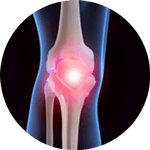
Is Prolotherapy Effective for Osgood-Schlatter Disease?
Osgood-Schlatter Disease is a childhood repetitive use injury that causes a painful lump below the kneecap. It commonly affects children experiencing growth spurts and those who play sports in which they regularly run and jump are most at risk.
We are including the abstract here. But you can read the full article by clicking here.
Gastón Andrés Topol, Leandro Ariel Podesta, Kenneth Dean Reeves, Marcelo Francisco Raya, Bradley Dean Fullerton and Hung-wen Yeh
Osgood-Schlatter disease symptoms may wax and wane until maturity and affect sport confidence and participation periodically. Chronic sequelae may include anterior knee pain, kneeling discomfort, or sports limitation. Symptom reduction parallels resolution of patellar tendinopathy by MRI/ultrasound, although ossicles may persist radiographically.
Small-needle injection of the patellar tendon enthesis/tibial apophysis with 12.5% dextrose was safe and well tolerated in adolescents with recalcitrant Osgood- Schlatter disease. Dextrose injection resulted in more rapid and frequent achievement of unaltered sport and asymptomatic sport than did usual care.
OBJECTIVE: To examine the potential of dextrose injection versus lido- caine injection versus supervised usual care to reduce sport alteration and sport-related symptoms in adolescent athletes with Osgood- Schlatter disease.
PATIENTS AND METHODS: Girls aged 9 to 15 and boys aged 10 to 17 were randomly assigned to either therapist-supervised usual care or double-blind injection of 1% lidocaine solution with or without 12.5% dextrose. Injections were administered monthly for 3 months. All sub- jects were then offered dextrose injections monthly as needed. Unal- tered sport (Nirschl Pain Phase Scale 4) and asymptomatic sport (Nirschl Pain Phase Scale 0) were the threshold goals.
RESULTS: Sixty-five knees in 54 athletes were treated. Compared with usual care at 3 months, unaltered sport was more common in both dextrose-treated (21 of 21 vs 13 of 22; P .001) and lidocaine-treated (20 of 22 vs 13 of 22; P .034) knees, and asymptomatic sport was more frequent in dextrose-treated knees than either lidocaine-treated (14 of 21 vs 5 of 22; P .006) or usual-care–treated (14 of 21 vs 3 of 22; P .001) knees. At 1 year, asymptomatic sport was more common in dextrose-treated knees than knees treated with only lidocaine (32 of 38 vs6of13;P.024)oronlyusualcare(32of38vs2of14;P.0001).
CONCLUSIONS: Our results suggest superior symptom-reduction effi- cacy of injection therapy over usual care in the treatment of Osgood- Schlatter disease in adolescents. A significant component of the effect seems to be associated with the dextrose component of a dextrose/ lidocaine solution. Dextrose injection over the apophysis and patellar tendon origin was safe and well tolerated and resulted in more rapid and frequent achievement of unaltered sport and asymptomatic sport than usual care. Pediatrics 2011;128:e000